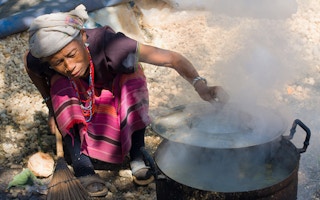PRAGUE — There’s a lot of hand-wringing about our warming planet, but billions of people face a more immediate problem: They are desperately poor, and many cook and heat their homes using open fires or leaky stoves that burn dirty fuels like wood, dung, crop waste and coal.
About 3.5 million of them die prematurely each year as a result of breathing the polluted air inside their homes — about 200,000 more than the number who die prematurely each year from breathing polluted air outside, according to a study by the World Health Organization.
There’s no question that burning fossil fuels is leading to a warmer climate and that addressing this problem is important. But doing so is a question of timing and priority. For many parts of the world, fossil fuels are still vital and will be for the next few decades, because they are the only means to lift people out of the smoke and darkness of energy poverty.
More than 1.2 billion people around the world have no access to electricity, according to the International Energy Agency’s World Energy Outlook for 2012. Most of them live in sub-Saharan Africa and in Asia. That is nearly four times the number of people who live in the United States. In sub-Saharan Africa, for instance, excluding South Africa, the entire electricity-generating capacity available is only 28 gigawatts — equivalent to Arizona’s — for 860 million people. About 6.5 million people live in Arizona.
“
Over the last 30 years, China moved an estimated 680 million people out of poverty by giving them access to modern energy, mostly powered by coal. Yes, this has resulted in terrible air pollution and a huge increase in greenhouse gas emissions. But it is a trade-off many developing countries would gratefully choose
Even more people — an estimated three billion — still cook and heat their homes using open fires and leaky stoves, according to the energy agency. More efficient stoves could help. And solar panels could provide LED lights and power to charge cellphones.
But let’s face it. What those living in energy poverty need are reliable, low-cost fossil fuels, at least until we can make a global transition to a greener energy future. This is not just about powering stoves and refrigerators to improve billions of lives but about powering agriculture and industry that will improve lives.
Over the last 30 years, China moved an estimated 680 million people out of poverty by giving them access to modern energy, mostly powered by coal. Yes, this has resulted in terrible air pollution and a huge increase in greenhouse gas emissions. But it is a trade-off many developing countries would gratefully choose. As China becomes wealthier, it will most likely begin to cut its air pollution problem through regulation, just as the rich world did in the 20th century. But, admittedly, cutting carbon-dioxide emissions will be much harder because these emissions are a byproduct of the cheap energy that makes the world go around.
Today, 81 per cent of the planet’s energy needs are met by fossil fuels, and according to the International Energy Agency, that percentage will be almost as high in 2035 under current policies, when consumption will be much greater. The unfortunate fact is that many people feel uncomfortable facing up to the undeniable need for more cheap and reliable power in the developing world. The Obama administration announced recently, for instance, that it would no longer contribute to the construction of coal-fired power plants financed by the World Bank and other international development banks.
This should not have been a surprise. The last time the World Bank agreed to help finance construction of a coal-fired power plant, in South Africa in 2010, the United States abstained from a vote approving the deal. The Obama administration expressed concerns that the project would “produce significant greenhouse gas emissions.” But as South Africa’s finance minister, Pravin Gordhan, explained at the time in The Washington Post, “To sustain the growth rates we need to create jobs, we have no choice but to build new generating capacity — relying on what, for now, remains our most abundant and affordable energy source: coal.”
The developed world needs a smarter approach toward cleaner fuels. The United States has been showing the way. Hydraulic fracturing has produced an abundance of inexpensive natural gas, leading to a shift away from coal in electricity production. Because burning natural gas emits half the carbon dioxide of coal, this technology has helped the United States reduce carbon dioxide emissions to the lowest level since the mid-1990s, even as emissions rise globally. We need to export this technology and help other nations exploit it.
At the same time, wealthy Western nations must step up investments into research and development in green energy technologies to ensure that cleaner energy eventually becomes so cheap that everyone will want it.
But until then they should not stand in the way of poorer nations as they turn to coal and other fossil fuels. This approach will get our priorities right. And perhaps then, people will be able to cook in their own homes without slowly killing themselves.
This post originally appeared in the New York Times.









